Abstract
The use of medicinal plants in the treatment and management of diabetes mellitus is not very popular in Europe and USA as it is in Africa due to adequate availability of synthetic drugs and insulin for the effective management of diabetes in the western countries. In Africa, over 80% of the population live in poor resource settings and depend on medicinal plants for the treatment of various diseases including diabetes mellitus. Africa is very rich in medicinal plants and many of these plants are used in the treatment of diabetes mellitus. These plants play important role as alternative medicine due to their low cost, perception of their minimal side-effects, availability and knowledge about their use in the treatment of diseases. Many African medicinal plants have been reported to possess pancreatic beta cells regenerating insulin potential, hypoglycaemic effects, increase insulin secretion, enhance glucose uptake by adipose tissue or muscles and inhibit glucose absorption from the intestine and glucose production from the liver. Medicinal plants may potentially provide useful source of new oral hypoglycaemic agents for drug development in pharmaceutical application or as adjuncts for existing therapies in the management of diabetes. This review therefore focuses on selected African medicinal plants with hypoglycaemic and anti-diabetic activities that are used in traditional medicine in the treatment and management of diabetes mellitus. There is an urgent need to document the knowledge of medicinal plants that are used mainly in the treatment and management of diabetes mellitus in various parts of Africa.
Keywords: Medicinal plants, diabetes, Africa, treatment
Introduction
Medicinal plants, no longer confined to local communities and homes, have become more widely available commercially, even in developed countries. In a modern setting, ingredients from medicinal plants are now marketed for purposes that were never dreamt of in the traditional healing systems from which they were derived, thanks to advancing technologies that allow the isolation, characterisation (and purification, in some cases), formulation, packaging and storage of ingredients from single or diverse medicinal plants for transportation to major cities where they are sold to urban dwellers. This is, to me, a fascinating point in the growth and development of medicinal plant research and applications. In the African context, medicinal plants and traditional medicines are directly and inherently linked: they are indivisible twins (but not twin evils). The economic and social burdens of chronic diseases such as diabetes, and the challenges associated with their management and treatment, are also contributing to the increasing relevance and use of medicinal plants, particularly in developing countries. Diabetes mellitus is becoming one of the leading causes of death worldwide because of its adverse complications that include cardiovascular-related diseases and chronic kidney disease [1,2]. Diabetes mellitus is considered a threat to public health because of the unavailability of adequate drugs to manage the condition, particularly in poor developing countries in Africa and Asia. Proper management and treatment of diabetes mellitus are lacking, which might explain the escalating prevalence of morbidity and mortality associated with it [3]. International Diabetic Federation (DF) [4] reported that over 366 million are diabetic globally and that this number may increase to 552 million by 2030. It is reported that over 14 million Africans are diabetic with Nigeria recording the highest prevalence of diabetes, followed by South Africa. In Africa, as a consequence of poor socio-economic conditions, it is nearly impossible to monitor and manage diabetes mellitus properly. In addition, the commercially available drugs used in the treatment of diabetes and diabetic complications have been associated with drastic side effects and are also mostly unaffordable in some developing countries, which is why people, especially in local communities, apply cheap and readily available medicinal plants in the treatment and management of diseases such as diabetes. It is fair to state here that the demand for medicinal plants and their application in traditional medicine is on the increase. We cannot stop the use of these remedies, so it is important to embrace their applications and to develop appropriate approaches to manage the challenges that might be associated with medicinal plants and their applications. There is a long-standing relationship between medicinal plants and their applications in traditional medicine. This relationship should not and cannot be ignored. In Africa, traditional medicine is widely practised with medicinal plants as key ingredients. In most countries in Africa, traditional medicine is widely used and are legislated in some African countries such as in Ghana, where traditional medicine is incorporated into primary health care [5]. It is estimated that 70% of the population in Ghana depends exclusively on the health care provided by about 45,000 traditional healers, most of whom are recognised and licensed through various associations under the umbrella of the Ghana Federation of Traditional Medicine Practitioners Association [5]. Figures 1, 2, 3, 4, 5, 6, 7, 8, 9, 10, 11, 12, 13, 14, 15 and 16 represent the medicinal plants discussed in this review.
Figure 1.
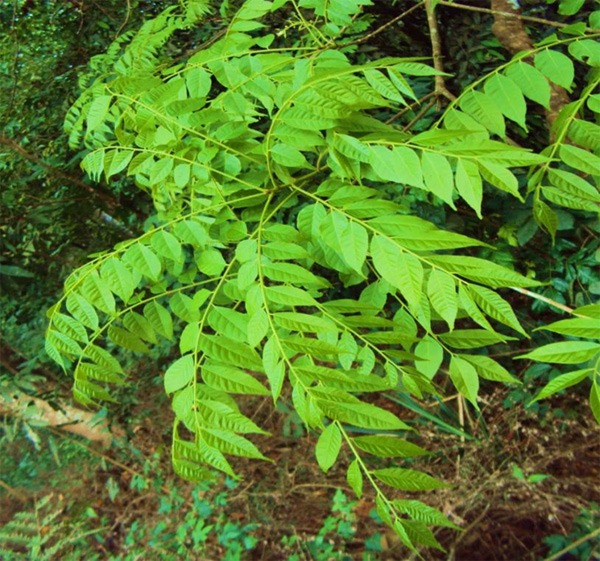
Clausena anisata: Source: www.tropical.theferns.info.
Figure 2.
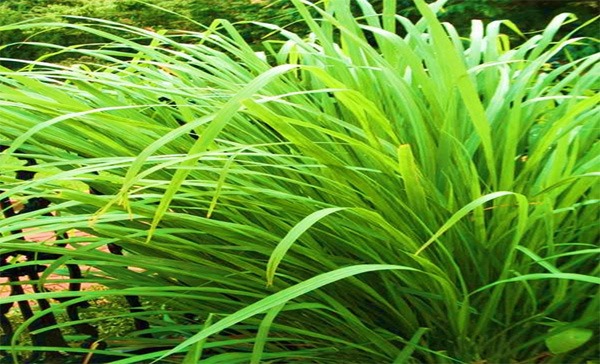
Cymbopogon citratus, Source: www.michers.com.
Figure 3.
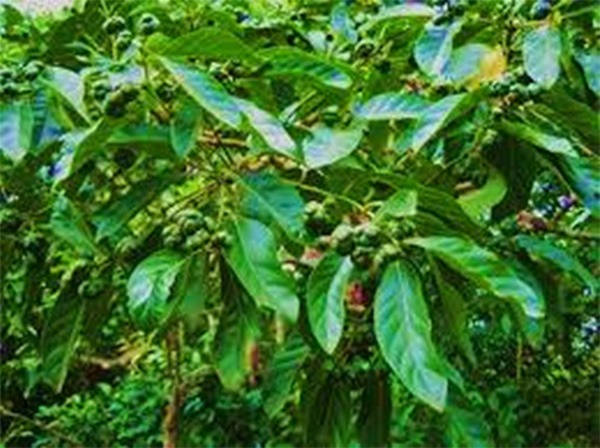
Morinda lucida: Source: www.liberianfaunaflora.org.
Figure 4.
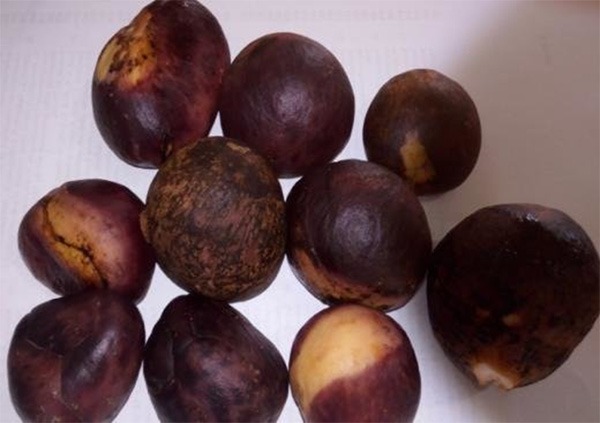
Bichholzia coriacea (Wonderful kola). Source: www.herbworldafrica.co.za.
Figure 5.
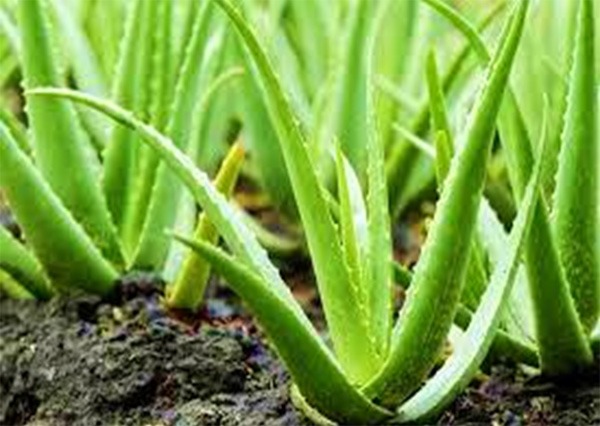
Aloe vera. Source: www.medicalnesw.today.com.
Figure 6.
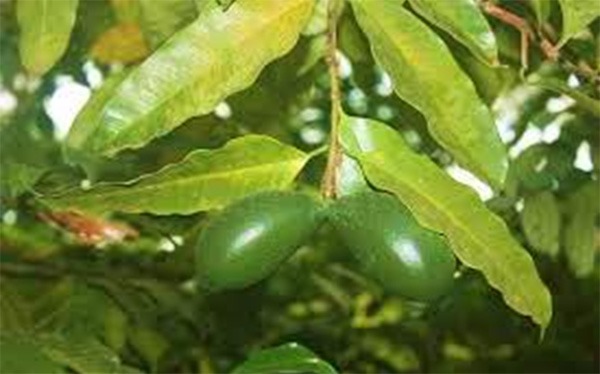
Picralima nitida. Source: www.westafricanplants.senckenberg.de.
Figure 7.
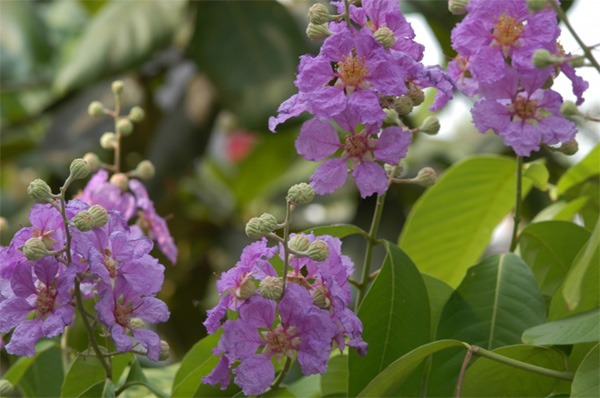
Lagerstroemia speciosa. Source: www.tropical.theferns.info.
Figure 8.

Bridelia ferruginea. Source: www.westafricanplants.senckenberg.de.
Figure 9.
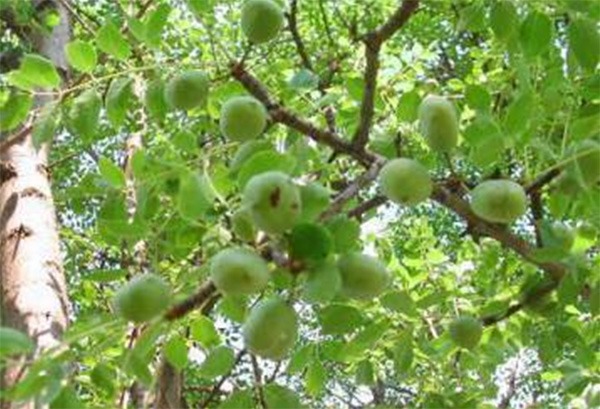
Sclerocarya birrea. Source: Venter & Venter [38].
Figure 10.
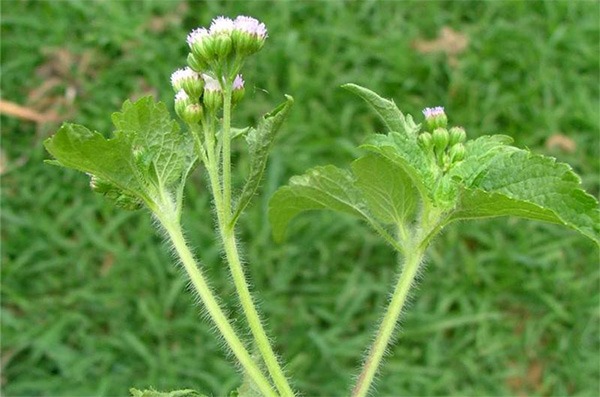
Ageratum conyzoides. Source: Okunade [42].
Figure 11.
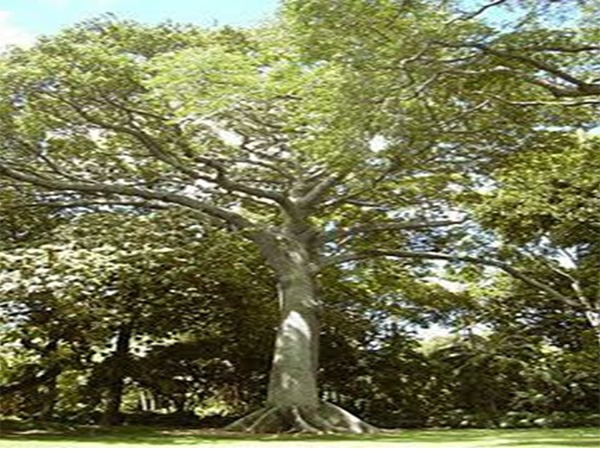
Ceiba pentandra. Source: www.tropical.theferns.info.
Figure 12.
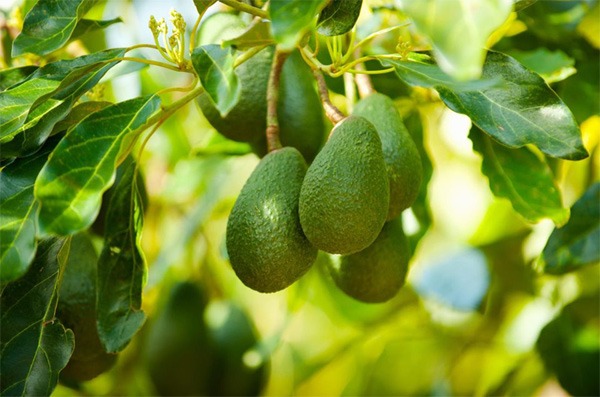
Persea americana. Source: www.thespruce.com.
Figure 13.
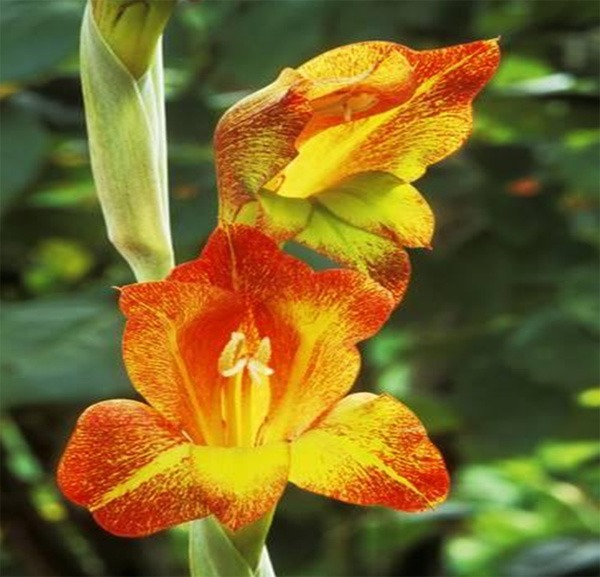
Gladiolus psittacinus. Source: www.allposters.co.uk.
Figure 14.
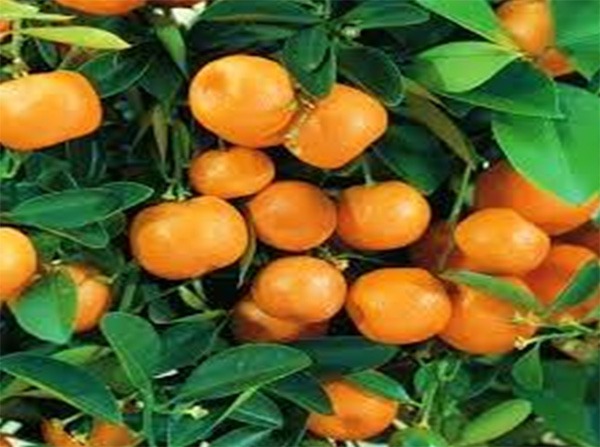
Citrus sinensis. Source: www.leaderplant.com.
Figure 15.
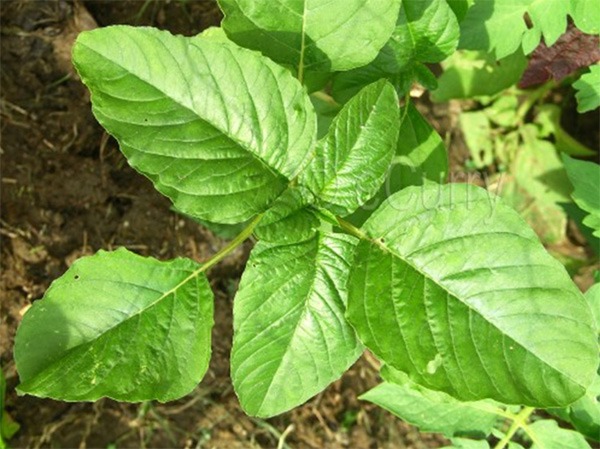
Chromolaena odorata. Source: www.marcheaozora.com.
Figure 16.
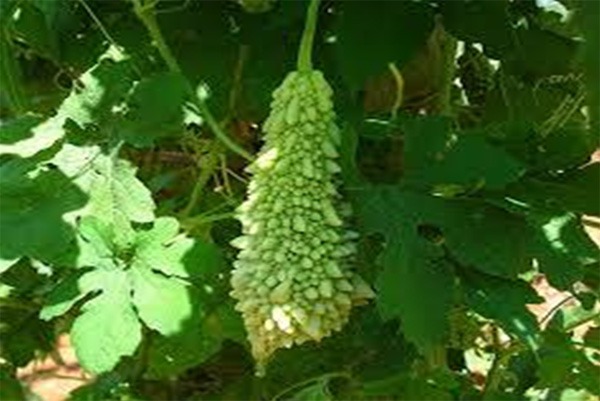
Momordica charantia. Source: www.herb-supplement-resource.com.
Plants with hypoglycaemic and anti-diabetic activities
Clausena anisata (Rutaceae): is a small, neat and attractive tree and when crushed, leaves give off a strong aniseed-like scent which is considered by many to be unpleasant, however, other parts of the plant may give pleasant smell. It is a tropical plant measuring up 10 metres. The root, stem, bark and fresh leaves are used in traditional medicine. In South Africa, traditional healers use the leaves of the plant in the treatment and management of diabetes mellitus and high blood pressure [6]. In Nigeria, it is used in the treatment of gastrointestinal disturbance and as anti-malarial agent [7] whereas in Tanzania, traditional healers use it in treating oral candidiasis and fungal infection of the skin and as anticonvulsant [8]. To evaluate the hypoglycaemic and anti-diabetic activity of the plant, Ojewole [6] used animal model where diabetes was induced intraperitoneally by injecting 90 mg/kg body weight of streptozotocin (STZ). The control normal (normoglycaemic) rats were treated with intraperitoneal injections of distilled water (2 ml/kg). At the end of the experiment, fasting blood samples were collected and fasting blood glucose determined. It was reported that blood glucose level was significantly reduced in fasted normal and fasted STZ-induced diabetic animals that received the extract and that the reduction in blood glucose was dose-dependent.
Cymbopogon citratus (Poaceae): Medicinal plants in general continue to contribute to the well-being of human beings [9]. Cymbopogon citratus is a native herb from temperate and warm regions such as India, Indonesia, Philippines and Malaysia but has become commonly available for use in Nigeria and other West African countries. Lemon grass is a member of a specie of grass that grows to as high as 1 metre with leaves of 1 to 1.5 cm in width that grows from a stalk of about 30 to 80 cm long with bulbous lower end. It has been applied in traditional medicine to treat bacterial infections, to prevent body odour, relief pain, improve body metabolism and as antioxidant, also in lowering cholesterol and reported to be anti-mutagenic and anti-carcinogenic [10-12]. The potential hypoglycaemic effect of aqueous extract of fresh lemon grass leaves was investigated in an animal model by Adeneye and Agbaje [12]. Following 42 days of oral treatment of normal and diabetic animals with the extract, the glucose lowering effects of graded doses of lemon grass was significant but equally dose-dependent when compared to control group. Interestingly, the most significant hypoglycaemic effect of the extract was recorded at 500 mg/kg. It is important to note that a dose of 5000 mg/kg did not cause mortality in any of the rats. However, the concentration brought about rapid locomotor activity within the first 15-20 minutes of administration which was followed by reduced locomotor activity while other behavioural toxicity subsequently disappeared. The results shows that although the plant displayed hypoglycaemic effect in both normal and diabetic rats, the plant should be used with caution especially in long term administration.
Morinda lucida (Rubiaceae): Morinda lucida is an evergreen shrub or small to medium-sized tree bearing a dense crown of slender, crooked branches. It can grow from about 2.4-18 metres tall with specimens up to 25 metres recorded in coastal Cote D’Ivoire. It is a multipurpose species that produce dyes, timber, fuel and traditional medicines. The roots are sold in local shops and markets, both as dyestuff and medicine while the leaves and twigs are sold as a medicinal tonic for young children. Morinda lucida is an important plant in traditional medicine in West Africa. Report shows that eighteen anthraquinones have been isolated from the wood and bark, including the red colorants 1-methylether-alizarin and purpuroxanthin. It is also rich in tannins, flavonoids and saponosides [13]. Extracts of the plant have shown anti-inflammatory, pain-relieving activity and found to promote gastric emptying and intestinal motility. Leaf extracts have shown in vitro antimalarial activity against Plasmodium falciparum, anti-diabetic and pharmacological properties [13-15]. To confirm the hypoglycaemic and anti-diabetic activity of the plant, Adeneye & Agbaje [16] evaluated the pharmacological effects of the fresh leaves ethanol extract in normoglyceamic and diabetic rats. Alloxan monohydrate at a dose of 150 mg/kg body weight in 0.1 M of freshly prepared cold citrate buffer was injected intra-peritoneally into each rat. Hyperglycaemia was established in the diabetic rats on day 5 of the experiment with fasting blood glucose (FBG) that is >200 mg/dl. For the control non-diabetic rats, they received 10 ml/kg/day of distilled water. The researchers reported that daily administration of 50-400 mg/kg/day of the extract produced significant reduction in the fasting blood sugar compared to the control group. It was documented that the extract (Morinda lucida) reduced hyperglycaemia through increased insulin secretion or increased peripheral glucose utilization. M lucida is reported to contain high levels of flavonoids, alkaloids, tannins and saponin and the presence of these compounds has been linked to hypoglycaemic and anti-diabetic activity of the plant [17,18]. The Yoruba tribe of West Africa readily apply various parts of this plant in traditional medicine and it would be of interest for a clinical trial to be conducted among the Yoruba population in the South-west Nigeria.
Buchholzia coriacea (Capparaceae): Buchholzia coriacea is a medicinal plant commonly used in Nigeria and other African countries. In Nigeria for example, it is locally named Uworo, Obi-ata among other names. It is also commonly referred as Wonderful Kola. The plant is used for the treatment of bacterial infections, respiratory disorders, dysmenorrhoea, ulcer, fibroid, chest pains and used as anti-helminthic. Decoctions and infusions or plasters of root, bark and leaves are used as valuable remedies in the treatment of various kinds of fever including yellow fever, malaria, trypanosomiasis and feverish condition during childbirth. The plant is also employed in the treatment and management of diabetes, hypertension, cerebral congestion, dysentery, stomach-ache, ulcers, leprosy and gonorrhoea. In Nigeria B coriacea is one of the four most popular medicinal plants used in traditional medicines to treat fever [19-22]. Adisa et al [23] investigated the hypoglycaemic effects of B coriacea extract after 10 days of treating STZ-induced diabetic male Wistar rats with ethanolic extract of the plant. At the end of the experiment, fasting blood glucose was reported to be reduced by 26%, 32% and 33% in normoglycaemic rats at 4 hours, 8 and 12 hours in that order following treatment with 250 mg/kg of the extract. The authors reported that the plant extract significantly reduced fasting blood glucose and the reduction was similar to that of a standard drug (glibenclamide) on day 7 and 10. The study showed that Buchholzia coriacea has hypoglycaemic and anti-diabetic activity, justifying its use in the treatment of diabetes mellitus in traditional medicine in Nigeria and other countries in West Africa.
Aloe vera (Asphodelaceae): Aloe vera is a succulent plant species of the genus Aloe. An evergreen perennial plant, originating from the Arabian Peninsula but grows wild in tropical climates around the world and is cultivated for agricultural and medicinal uses. Aloe vera, described as a “wonder plant”, is a short-stemmed shrub and contains more than 500 species of flowering succulent plants. Aloe vera has been the focus of many scientific studies over the years in respect of its claimed therapeutic properties. In many parts of the world, Aloe vera is used for teeth and gum cleaning, for treating constipation, diabetes, memory loss, depression, irritable bowel syndrome, wounds, used as antioxidants and antimicrobial agents and in protecting the skin against damage [24-27]. In a study [28] involving the use of 10-12 animals divided into 4 groups, fasting blood glucose was determined after 21 days of treatment with Aloe vera extract. The results showed that Aloe vera extract significantly reduced fasting blood glucose and that the result was similar to that of metformin-treated group. The same study also reported that after 4 weeks of treatment of animal with Aloe vera extract, there was a significant reduction in glucose-6-phosphatase activity in diabetic treated groups compared to untreated STZ-induced diabetic group; liver and muscle glycogen also decreased in Aloe vera treated diabetic group. To support in vivo glucose-lowering activity of Aloe vera, the same researchers [18] evaluated the extract of Aloe vera for GLUT-4 gene expression in embryonic mouse and mouse fibroblast cells. Densitometry scanning of agarose gel shows an increase in GLUT-4 transcripts by about 2.174-fold and insulin. The results of both the in vivo and in vitro studies showed that the aqueous extract of Aloe vera have glucose-lowering activities and modulates GLUT-4 mRNA expression. In spite of various researches that have been conducted on Aloe vera, it has been suggested that some of the several therapeutic benefits associated with Aloe vera require further scientific evidence [28].
Picralima nitida (Apocynaceae): Picralima nitida is a deciduous shrub or a tree that can reach a height of 20 meters or more in height with dense crown. It is a popular medicinal herb in Africa, where it is commonly gathered from the wild for local medicinal use. The root, bark, seeds and leaves and fruits are used in the treatment of fever, hypertension, wound healing and trypanosomiasis [29-31]. Not much is known about the hypoglycaemic and anti-diabetic activity of the plant, for this reason, Aguwa et al [30] evaluated the blood glucose lowering activity of the commonly used aqueous extract of P.nitida seed using experimental animal. To start with the study, the authors collected pods of P nitida, identified it via proper scientific means and extracted using water. Local strain of adult rabbis were used in the experiment. The animals were divided into three groups (A, B and C). Group A was administered with 648 mg (maximum effective dose), B received 500 mg/kg tolbutamide and C was given 3 ml distilled water. Animals in Group A represented the diabetic (made diabetic by injecting alloxan monohydrate intra-peritoneally) while groups B and C served as controls. At the end of experiment and fasting blood glucose determination, there was a significant reduction in fasting blood glucose of normoglycaemic and diabetic group. Alloxan is known to severely destroy the pancreatic beta cells but in this study, the extract reduced the blood glucose levels in alloxan-induced diabetic rabbits meaning that the extract displayed extra-pancreatic effects. This may be explained by the presence of various ingredients. Due to the limitation of the study, further research on the extract is recommended.
Lagerstroemia speciosa (Lythraceae): Known as banaba is a flowering plant that grows in warm climates like the Philippines, India and Ghana. The tree can grow up to 10 meters high with large green oblong leaves that is about 3 inches in width and 7 inches in length. Banaba bears nut-like fruits that are arranged in large clumps. It is widely used in African countries in traditional medicine as herbal treatment for diabetes. The Banaba leaves and flowers contain corrosolic acid, a substance believed to possess insulin like effect of lowering the glucose in the body. Banaba is also used as a weight-loss supplement for its ability to delay or reduce the absorption of carbohydrates. Banaba is also rich in vitamins and minerals including zinc and magnesium as well as in dietary fibers [30]. An anti-diabetic and anti-obesity study on L speciosa extract by Klein et al [32] shows that tannin molecules are responsible for the insulin-like glucose transport stimulatory activity of the extract. Specific gallotannins appear to be more potent and effective than ellagitanins. The study also shows that corosolic acid from L speciosa does not possess any insulin-like glucose transport stimulatory activity and that its anti-diabetic activity (if any) may be via indirect non-insulin mechanism. Further research is suggested to be able to identify and isolate the most effective tannin responsible for the glucose lowering activity of the extract and its ingredients and possible mechanism of action.
Bridelia ferruginea (Euphorbiaceae): Bridelia ferruginea is a shrub which can grow up to 8 metres tall or more. Bridelia ferruginea is a popular herbal remedy in parts of Africa, and the bark is commonly sold in local markets. The leaves, leafy twigs and bark are used, and the medicinal activity is believed to be mainly due to the presence of tannins (which are astringent) and saponosides. Decoctions of the leaves, leafy twigs and bark are commonly used in the treatment of urethral discharges; dysentery and diarrhoea; fever and rheumatic pains. The bark, and the bright red infusion from it, are commonly used as a mouth-wash and remedy for thrush in children [33]. The anti-diabetic activity and the indigenous application of methanol extract of the plant has been reported [34]. Njamen et al [35] studied the effect of B ferruginea leaf extract on sucrose-induced glucose intolerance in rats. In this experiment, the authors used 6-7 week old male Wistar rats weighing 140-160 g. The animals were maintained on 50% glucose-rich diet for specific period. Animals that showed glucose intolerance after 8 week dietary period were used for the study. After six days of oral administration of the extract (50 mg/kg per day), fasting blood glucose concentration in 50% sucrose-fed rats reduced significantly to the concentration reported in the control group. However, the extract did not display any significant effect on insulin level in the same experiment. The experiment shows that the plant extract demonstrated significant hypoglycaemic activity in sucrose-rich diet, glucose-intolerant rats compared to control group, showing that the extract contain metabolites with anti-diabetic properties. It is possible that the mechanism of action of the extract may be related to its ability to improve insulin sensitivity rather than insulin secretion.
Sclerocarya birrea (Anacardiaceae): is a popular African wild tree that is widely available in several countries in Africa. Its leaves, stem bark, root and fruits are used in food and traditional medicine. It has been shown that the fruit is rich in ascorbic acid. The fruit juice contains sesquiterpene hydrocarbon, which are terpenes found in plants that are reported to have bacteriostatic properties [9]. The seed encloses a soft white kernel-rich in oil and protein. The oil contains oleic, palmitic, myristic, and stearic acids while the kernel protein contains amino acids, with a predominance of glutamic acid and arginine. The extracts from different part of the plant showed high total phenolic compounds and radical-scavenging capacities and antioxidant activities [36]. In certain part of Africa, the stem bark of the plant is used in the treatment of wide range of diseases such as diarrhoea, dysentery, hypertension, infertility, urinary tract infections and diabetes [36]. To test the anti-diabetic activity of the plant, Ojewole [36] collected fresh stem-barks of S birrea in Durban, South Africa. He tested for the anti-diabetic activity using aqueous extract of the plant in animal model. After inducing diabetic condition using STZ, the author treated the diabetic rat with 800 mg/kg for 1, 2, 3, 4 and 8 hours. The hypoglycaemic effect of the aqueous extract of the plant became obvious one hour after oral administration, getting to the peak of its hypoglycaemic effect at 4 hours and the blood glucose gradually returned to normal at 24 hours. It has been documented that S birrea contain tannins, coumarins, terpenoids, ascorbic, amino acids such as glutamic acid and arginine and it has been shown that the presence of coumarins, flavonoids, terpenoids and other chemical compounds do have anti-diabetic effects [6,36,37].
Ageratum conyzoides (Asteraceae): Ageratum conyzoides is an erect, herbaceous annual plant that measures 30 to 80 cm tall. It is widely applied in traditional medicine by various cultures worldwide varying from region to region. In Central Africa, it is used to treat pneumonia and wounds while in Nigeria, aqueous extract of the plant is used as a bacteriocide [39]. In Cameroon and Congo, it is used to treat fever, rheumatism, headache, and colic [40]. The anti-diabetic activity of mature A conyzoides leaves was evaluated in Yaounde, Cameroon. The leaves of the plant were first dried at room temperature and ground to fine powder (138 g) before boiled in distilled water for 30 minutes. The decoction was then allowed to cool for another 30 minutes at room temperature and later filtered to obtain the filtrate. The filtrate was dried in an oven for 3 days. For this experiment, glibenclamide was used as control drug. For this animal experimental laboratory-based study, male albino Wistar rats weighing 180-220 g were used. Diabetes was induced in the animal by intravenous injection of a freshly prepared streptozotocin (STZ). Animals also received different doses of the extract (100 mg, 200 mg and 200 mg/kg). It was observed that oral administration of the aqueous extracts of the plant at 200 mg/kg yielded a significant hypoglycaemic effect in normal fasted rats after 3 hours and the most pronounced effect was reported after 8 hours. It was also observed that the extract at 200 mg and 300 mg in diabetic rats produced significant anti-hyperglycaemic effects after 1.30 minutes for up to 8 hours. The results of the study showed that the aqueous extract of A conyzoides leaves reduced blood glucose in normal and STZ-induced diabetic animal model [41].
Cuba pentandra (Malvaceae): Is a large deciduous tree found in western tropical Africa and other parts of the world. It is known for the cotton-like fibre around the seeds which is used for floatation devices. Young leaves are cooked and eaten. The tree can be as tall to a height of 150 feet with branches widely spreading and spiny trunk often up to 9 feet in diameter. Its flowers usually open before the leaves appear. Reports have shown that the leaves, bark, shoot and root of the plant have been used by traditional healers in the treatment of wounds, ulcers, skin diseases, heamorrhoids, urinary tract infections, inflammations and cough [43]. It has been used in combination with other plants to treat hypertension and diabetes [44]. In Jos, Plateau State, Nigeria there has been claim by traditional healer of the anti-diabetic activity of Ceiba pentradra. To verify this claim, Ladeji et al [45], investigated the scientific basis of using Ceiba pentandra in the treatment and management of diabetes in a STZ-induced animal model. As part of the experiment, the bark extract of C.pentandra was prepared by a laboratory adaption of the traditional method. A 100 g of the air-dried bark was boiled in 200 ml of distilled water for 20 minutes and the extract passed through different sages until it was ready to be used for the experiment. The researchers [45] induced diabetes mellitus in rats by a single intra-peritoneal injection of 70 mg/kg STZ. Following 24 hour after the injection of STZ, diabetes was confirmed 24 hours later by measuring the glucose level. Diabetic and non-diabetic animals in different groups received graded doses of the extract. Treatment with 400 mg/kg bark extract yielded a significant reduction in glucose level in diabetic rats when compared with no-diabetic group within 4 weeks of administration. The mechanism of the hypoglycaemic effect of the extract is poorly understood. However, report shows, its anti-diabetic activity may be related to its effect of circulating insulin possibly facilitating glucose utilization by peripheral tissues [46].
Persea americana (Lauraceae): Belongs to the laurel family which includes many aromatic trees and shrubs. It is one of the plants that have been used in traditional medicine. The bark, fruit and leaf are used in traditional medicine in Mexico, West Indies and Africa in the treatment of several disease conditions [47,48]. Persea americana (avocados) have been cultivated for their highly nutritious fruits since about 8,000 BC. It is a rapidly-growing tree or shrub that normally grows up to 20 m tall (but can reach 40 m) and lives for about 50 years. The flesh is highly nutritious and has a composition different from that of other fruits. It is high in calories (220 kcal per 100 g), contains vitamins A, B and E and is a good source of folic acid, riboflavin, niacin, thiamin, iron and potassium. It is eaten in salads and desserts and used as a sandwich filling and an ingredient in dips and spreads and milkshakes [48]. There have been reports from Mexico and Peru that the skin of the fruit is active against parasitic intestinal worms [47]. The anti-diabetic activity of avocados has also been reported [49-51]. The hypoglycaemic and hypocholesterolemic potential of Persea americana leaf extracts was examined by Brai et al [48]. In the experiment, the scientists divided male albino rats into 4 groups of 6 animals per group. Group 1 was fed standard rat chow while groups 2, 3 and 4 received modified diet containing 20% groundnut oil, 0.5% cholesterol and 0.25% cholic acid to induce hypercholesteromia. Animals in 3 and 4 received aqueous and methanolic extracts of P americana a daily dose of 10 mg/kg body weight in that order. Animals in group 2 acted as hypercholesterolemic control and were given distilled water. The results showed that plasma glucose was significantly higher in animals that received hypercholesterolemic diet compared to animals in normal control group. It was observed that the administration of aqueous and methanolic leaf extracts of Persea americana caused 16% and 11% reduction in plasma glucose of the treated animals compared to control group. Plasma cholesterol also increased significantly in animals fed with hypercholesterolemic diet compared to control group. It is suggested that the hypoglyceramic effect of P americana may be associated with its stimulating secretion of insulin or by enhancing blood glucose transport to peripheral tissues [48,51]. In another study in alloxan-induced diabetes in albino rats, Ezejiofor et al [52] reported that P americana seeds exerted a dose-dependent protective action on the pancreas, kidneys and liver similar to the effect of glibenclamide. The authors concluded that the ability of P americana to restore body weight seems to be a result of its ability to reduce hyperglycaemia by increase glucose metabolism and by reversing gluconeogenesis. The results agrees with the study of Alhassan et al [53] on the seed extracts of P americana on alloxan-induced diabetes in rats.
Gladiolus psittacinus (Tridaceae): the genus Gladiolus include about 160 species with 10 species native to Eurasia and 250 species to sub-Saharan Africa. It grows well in sub-Saharan Africa with mottled flowers that could be white, pink, purple or orange [54]. It has been documented that in countries such as Nigeria, Cameroon, Ghana, Gladiolus psittaccinus corms are used for food and in traditional medicine. In South West Nigeria, the corms called baka are utilized in treating bacterial infections [55]. Report shows that the extracts of G psitaccinus contain alkanoids, tannins, saponnins, flavonoids and carbohydrates and are active against bacteria such as P aeruginosa [56]. Studies on the anti-diabetic activity of Gladiolus psittaccinus is scarce. In one study, Fred-Jaiyesimi & Abo [57] examined the anti-diabetic activity of G psittaccinus in alloxan-induced diabetic rats. For this study, 200 g of the bulb powder were macerated in 80% methanol for 4 days. The extract was filtered, concentrated to dryness under reduced pressure at a temperature of 40°C and was used for the experiment. Healthy male Wistar rats were divided into 4 groups of 5 animals per group with group 1 given extract (1 g/kg body weight), group 2 received glucose solution (2 g/kg per body weight), group 3 glibenclamide (5 mg/kg body weight) and group 4 received water serving as control group. Diabetes was induced in overnight fasted animals by a single intra-peritoneal injection of 60 mg/kg alloxan monohydrate and hyperglycaemic was confirmed after 72 hours of injection. Results showed that oral administration of the methanol extract of G psittaccinus at 1 g/kg body weight indicated significant hypoglycaemic effects in the oral glucose tolerance test at 90, 120 and 180 minutes. The authors postulated that the mechanism of action could involve stimulation of insulin-like effect acting by improving the glucose uptake and metabolism or by inhibiting gluconeogenesis thereby displaying hypoglyceamic effect.
Citrus sinensis (Rutacae): is a small, shallow-rooted evergreen shrub or tree growing about 6-13 metres tall with an enclosed conical top and mostly spiny branches; a well-known fruit which is widely available in countries around the world. The tree is commonly cultivated for its fruit in warm temperate, subtropical and tropical zones [58]. The orange fruit contains antioxidant and anti-inflammatory compounds such as flavonoids, phenolics and ascorbic acid [59,60]. The flavonoids are tangeretin, nobiletin, diosmin and hesperetin. Orange peel contains flavonoids and phenolic compounds. These compounds in bitter orange peel show choleretic, anti-inflammatory, antibacterial and antifungal activity [58]. By increasing iron absorption from foods, oranges and orange juice have been shown to reduce anaemia. Oranges are also a source of absorbable folic acid. Population studies have shown a strong correlation between eating diets high in vegetables and fruit and improvement in human health [61-64]. Chilaka et al [65] shows that Citrus sinensis seed oil was able to significantly reduce blood glucose in alloxan-induced diabetic rats when compared to the diabetic control group and the metformin treated group. Luka et al [66] also reported that in alloxan-induced diabetic rats, the peel extract of Citrus sinensis showed anti-diabetic and hypolipidaemic activities by decreasing blood glucose and lipids suggesting that the extract may contain cmpounds with anti-diabetic activity and could therefore play a role in the treatment and management of diabetes mellitus. Also, in another animal model laboratory-based study, Parmar and Kar [67] indicated that 25 mg or 200 mg/kg of Citrus sinensis peel extract significantly reduced the blood glucose induced by the injection of alloxan (hyperglycaemic state), thus revealing the anti-diabetic and anti-peroxidative properties of Citrus. Haryoto et al [68,69], also reported on the anti-diabetic activities of Citrus sinensis with both showing that the extract displayed hypoglycaemic effect.
Chromolaena odorata (Asteraceae): is a flowering shrub in the sunflower family. This fast-growing perennial shrub can be very invasive forming dense tanged bushes measuring 1.5 to 2.0 metres in height and could reach a height of about 6 metres. The plant is hairy and glandular and the leaves give pungent aromatic smell when crushed. The leaves are used in the treatment of skin wounds and other disease conditions. The plant can also be grown as medicinal and ornamental plants. It is found in USA, Mexico, Caribbean and West Africa. The use of C odorata for medicinal purpose has been place for many years and its use is considered relevant even in modern world where orthodox medicine is available [68]. To measure the anti-diabetic activity of C odorata, Ijioma et al [70] collected fresh leaves of C odorata from the local community in Abia State, Nigeria. The leaves were processed following standard procedure and extracted using ethanol. Diabetes was induced in rats by a single intra-peritoneal injection of freshly prepared solution of alloxan monohydrate (160 mg/kg). After 8 days of induction of diabetes, blood glucose was determined and animals with blood glucose greater than 190 mg/dl were considered diabetic. Animals were randomly divided into 5 groups. Animals in group 1 served as the control group. Group 2 (diabetic control) did not receive any treatment. Animals in group 3 received glibenclamide (5 mg/body weight). Animals in group 4 and 5 were given 150 mg and 300 mg of the extracts in that order of concentration. Treatment for animals in all the groups was administered daily through oral route for 21 days. Following this experiment, the authors reported that extracts of C odorata significantly reduced blood glucose levels within the acute and sub-acute duration of the study, reducing the blood glucose levels in the diabetic to almost normal levels in 21 days of treatment. This shows that the extract contains compounds with hypoglycaemic properties. The hypoglycaemic effect as demonstrated by the ethanol extracts of C odorata may be due increasing insulin secretion and peripheral utilization of glucose in the diabetic rats. Ogbonna et al [71] also reported on the hypoglycaemic effect of C odorata in diabetic rats.
Momordica charantia (Cucurbitaceae): Known as bitter melon, is a slender-stemmed, climbing or running herbaceous plant with soft tendrils. The leaves and fruits have been used in the treatment of cancer, bacterial infections, diabetes and occasionally used to make teas and beer. As an unriped fruit, it is eaten as a vegetable and has been in traditional medicine in China, India and Africa. It has been known to stimulate a sluggish digestive system and treats dyspepsia. It has been reported that the fresh juice of the plant reduced blood sugar as a result of the presence of charantin, insulin-like peptides and alkaloids all of which act together to improve glucose level. Its juice has been reported to prevent jaundice, also as an immune-modulator, used in the treatment of piles and cholera (Kumar & Bhowmk) [72]. In an experimental laboratory-based animal study, Ojewole et al [73] studied the hypoglycaemic effect of Momordica chanrantia. The study involves the use of young adult normal Wistar rats. The Wistar rats were grouped into two groups (A and B) of test and control rats. Diabetes mellitus was intra-peritoneally induced in group A with STZ (90 mg/kg body weight). Following the end of the experiment (16 hour fasting period), blood levels of fasted normal (normoglycaemic) and diabetic animals were determined. Results obtained from the study showed that M charantia whole-plant aqueous extract has several pharmacological constituents. The extract yielded dose-dependent, significant reduction in the blood glucose levels of the normal (normoglycaemic) and diabetic animals justifying its use in traditional medicine in the treatment and management of diabetes mellitus.
Conclusion
Diabetes mellitus remain a global challenge; its management and associated complication is equally challenging. Developing countries are faced with multitude of problems among which are economic, health and social problems. Resources to adequately address these problems/challenges are scarce or simply mismanaged in some cases. As part of the solutions to tackling the challenge of diabetes mellitus, majority of people especially those in living rural areas use medicinal plants in the treatment and management of diabetes mellitus. As part of the documentation of the medicinal plants used in the treatment and management of diabetes mellitus particularly in Africa, this review paper examined sixteen medicinal plants and their hypoglycaemic and anti-diabetic activities.
Future research
Further research is suggested: (1) Identify specific phytochemical ingredients that are directly linked with hypoglycaemic and anti-diabetic activity of specific plant extracts. (2) Extensively and comprehensively conduct clinical trials on large population on extracts that are commonly used in the treatment and management of diabetes in the local communities. (3) There is a need to try combination doses of natural plant products and synthetic drugs to determine the optimal combination for possible cost-effective therapies. (4) Monitor and determine long-term effects of herbal products on the cells and organs of persons using them. (5) Be able to assess the inter and intra-specific variation of secondary metabolite production in response to the biological environment. (6) Study the feasibility of developing the tablet form of plants with clinically proven hypoglycaemic and anti-diabetic activities. (7) Develop acceptable approach of fortifying local foods with herbal products that have displayed significant hypoglycaemic and anti-diabetic activities.
Acknowledgements
Financial support received from the Cape Peninsula University of Technology (CPUTRJ23) and National Research Foundation (CPUT-NRF022) is acknowledged.
Disclosure of conflict of interest
None.
References
- 1.Ayepola OR, Cerf ME, Brooks NL, Oguntibeju OO. Kolaviron modulates apoptosis by suppressing oxidative stress and inflammation in diabetes-induced nephrotoxic rats. Phytomedicine. 2014;21:1785–1793. doi: 10.1016/j.phymed.2014.09.006. [DOI] [PubMed] [Google Scholar]
- 2.Ayepola OR, Brooks NL, Oguntibeju OO. Kolaviron improved resistance to oxidative stress and inflammation in the blood (erythrocytes, serum and plasma) of streptozotocin-induced diabetic rats. Scientific World Journal. 2014;2014:921080. doi: 10.1155/2014/921080. [DOI] [PMC free article] [PubMed] [Google Scholar]
- 3.Dailey G. Overall mortality in diabetes mellitus: where do we stand today? Diabetes Technol Ther. 2011;13(Suppl 1):S65–74. doi: 10.1089/dia.2011.0019. [DOI] [PubMed] [Google Scholar]
- 4.International Diabetes Federation (IDF) Diabetes Atlas. 7th edition. Brussels, Belgium: Int Diabetes Federation; 2014. [Google Scholar]
- 5.World Health Organization (WHO) Legal status of traditional medicine and complementary/alternative medicine: a world wide review. Geneva. 2001 [Google Scholar]
- 6.Ojewole JA. Hypoglycaemic effect of clausena anisata (wild) hook methanolic root extract in rats. J Ethnopharmacol. 2002;81:231–237. doi: 10.1016/s0378-8741(02)00085-5. [DOI] [PubMed] [Google Scholar]
- 7.Uwaifo AO. The mutagenicities of seven coumarin derivatives and furan derivative isolated from three medicinal poants. J Toxicol Environ Health. 1984;13:521–30. doi: 10.1080/15287398409530517. [DOI] [PubMed] [Google Scholar]
- 8.Moshi MJ, Kagashe GA, Mbwambo ZH. Plants used to treat epilepsy by Tanzania traditional healers. J Ethnopharmacol. 2005;97:327–336. doi: 10.1016/j.jep.2004.11.015. [DOI] [PubMed] [Google Scholar]
- 9.Vogler BK, Ernst E. Aloe vera, a systematic review of its clinical effectiveness. Br J Gen Pract. 1999;49:823–828. [PMC free article] [PubMed] [Google Scholar]
- 10.Carlini EA, Contar J de DP, Silva-Filho AR, da Silveira-Filho NG, Frochtengarten ML, Bueno OF. Pharmacology of lemongrass: effects of teas prepared from leaves on laboratory animals. J Ethnopharmacol. 1986;17:37–64. doi: 10.1016/0378-8741(86)90072-3. [DOI] [PubMed] [Google Scholar]
- 11.Suaeyun R, Kinouchi T, Arimochi H, Vinitketkumnuen U, Ohnishi Y. Inhibitory effects of lemon grass on formation of azoxymethane-induced DNA adducts and aberrant crypt foci in the rat colon. Carninogenesis. 1997;18:949–955. doi: 10.1093/carcin/18.5.949. [DOI] [PubMed] [Google Scholar]
- 12.Adeneye AA, Abgaje EO. Hypoglycaemic and hypolidemic effects of fresh leaf aqueous extract of cymbopogon citratus Stapf in rats. J Ethnopharmacol. 2007;112:440–444. doi: 10.1016/j.jep.2007.03.034. [DOI] [PubMed] [Google Scholar]
- 13.Makinde JM, Obih PO. Screening of morinda lucida leaf extract for malarial action on plasmodium berghei berghei in ice. Afr J Med Med Sci. 1985;14:59–63. [PubMed] [Google Scholar]
- 14.Tona L, Ngimbi NP, Tsakala M, Mesia K, Cimanga K, Apers S, De Bruyne T, Pieters L, Totte J, Vlietinck AJ. Antimalarial activity of 20 crude extract from nine African medicinal plants used in Kinshasa, Congo. J Ethnopharmacology. 1999;68:193–203. doi: 10.1016/s0378-8741(99)00090-2. [DOI] [PubMed] [Google Scholar]
- 15.Ettarh RR, Emeka P. Morinda lucida extract induces endothelium dependent and independent relaxation of rat aorta. Fitoterapia. 2004;75:332–336. doi: 10.1016/j.fitote.2004.02.003. [DOI] [PubMed] [Google Scholar]
- 16.Adeneye AA, Agbaje EO. Pharmacological evaluation of oral hypoglycaemic and anti-diabetic effects of fresh leaves ethanol extract of morinda lucida benth in normal and allo-xan-induced diabetic rats. Afri J Biomed Res. 2008;11:65–71. [Google Scholar]
- 17.Oladele SB, Ayo SO, Adaudi AO. Medicinal and physiological properties of flavonoids, coumarin derivatives and anthraquinones of plant origin. West Afri J Pharmacol Drug Res. 1995;11:134–144. [Google Scholar]
- 18.Sudheesh S, Manital VB, Vijayalakshmi NR. Potential health promoting effects of flavonoids-a comparative study of hypolipidaemic and hypoglycaemic activities. Abstracts of Posters, P: 179, 53rd Annual Meeting of the Society of Medical Plant Research. 2005 [Google Scholar]
- 19.Ajaiyeoba EO, Onocha PA, Olarenwaju OT. In-vitro antihelmintic properties of Buchholzia coriacea and Gynandropsis gynandra extracts. Pharm Biol. 2001;39:217–22. [Google Scholar]
- 20.Nweze NE, Fakae LB, Asuzu IU. Trypanocidal activity of the ethanolic extract of buchholzia coriacae seed. Niger Vet J. 2009;30:1–6. [Google Scholar]
- 21.Ezekiel OO, Onyeozin NF. Preliminary studies on the antimicrobial properties of buchholzia coriacea stem bark. Fitoterapia. 2009;73:706–709. [Google Scholar]
- 22.Nweze NE, Asuzu IU. The antihelminthic effects of buchholzia coriacea seed. Nig Vet J. 2006;27:60–65. [Google Scholar]
- 23.Adisa R, Choudhary MI, Olorunsogo OO. Hypoglycaemic activity of buchholzia coriacea (capparaceae) seeds in streptozotocin-induced diabetic rats and mice. Exp Toxicol Pathol. 2011;63:619–25. doi: 10.1016/j.etp.2010.05.002. [DOI] [PubMed] [Google Scholar]
- 24.Reynoids T. Aloe vera, what are the active ingredients? Proc Active Ingredients Conf Paris. 1998:85–93. [Google Scholar]
- 25.Vogler BK, Ernst E. Aloe vera: a systematic review of its clinical effectiveness. Brit J Gen Pract. 1999;49:823–828. [PMC free article] [PubMed] [Google Scholar]
- 26.Okyar A, Can A, Akev N, Baktir G, Sutlupinar N. Effect of Aloe vera leaves on blood glucose level in type and tpe 2 diabetic rat. Phytother. 2001;15:157–1561. doi: 10.1002/ptr.719. [DOI] [PubMed] [Google Scholar]
- 27.Rajasekaran S, Ravi K, Sivagnanam K. Beneficial effects of Aloe vera leaf gel extract on lipid profile status in rats with STZ diabetes. Clin Exp Pharmacol Physiol. 2006;33:232–7. doi: 10.1111/j.1440-1681.2006.04351.x. [DOI] [PubMed] [Google Scholar]
- 28.Kumar R, Sharma B, Tomar NR, Roy P, Gupta A, Kumar A. In vivo evaluation of hypoglycaemic activity of Aloe spp and identification of its mode of action on GLUT-4 gene expression in vitro. Appl Biochem Biotechnol. 2011;164:1246–1256. doi: 10.1007/s12010-011-9210-6. [DOI] [PubMed] [Google Scholar]
- 29.Ayensu ES. Medicinal plants in West Africa. Algonac, Michigan: Reference Publications Inc.; 1978. p. 330. [Google Scholar]
- 30.Aguwa CN, Ukwe CV, Inya-Agha SI, Okonta JM. Antidiabetic effect of Picralima nitida aqueous seed extract in experimental rabbit model. J Nat Remed. 2001;2:135–139. [Google Scholar]
- 31.Erharuyi O, Falodun A. Free radical scavenging activities of methanol extract and fractions of Picralima nitida (Apocenaceae) J Appl Sci Environ Manag. 2012;16:291–294. [Google Scholar]
- 32.Klein G, Kim J, Himmeldirk K, Cao Y, Chen X. Antidiabetic and anti-obesity activity of Lagerstroemia speciosa. Evid Based Complement Alternat Med. 2007;4:401–7. doi: 10.1093/ecam/nem013. [DOI] [PMC free article] [PubMed] [Google Scholar]
- 33.Adebayo EA, Ishola RO. Phytochemical and antimicrobial screening of the crude extracts from the root, stem bark and leaves of Bridelia ferruginea. Afri J Biotech. 2012;8:650–653. [Google Scholar]
- 34.Kolawole OM, Oguntoye So, Agbede O, Olayemi AB. Studies on the efficacy of Bridelia ferruginea Benth bark extract on reducting the coliform load and BOD of domestic waste water. Ethnobotan Leaflets, Illinois, USA. 2006 [Google Scholar]
- 35.Njamen D, Nkeh-Chungag BN, Tsala E, Fomum TF, Mbanya JC, Ngufor GF. Effect of Bridelia ferruginea (Euphorbiaceae) leaf extract on sucrose-induced glucose intolerance in rats. Trop J Pharm Res. 2012;11:759–765. [Google Scholar]
- 36.Ojewole JA. Hypoglycaemic effect of Sclerocarya birrea Hochst stem-bark aqueous extract in rats. Phytomedicine. 2003;10:675–81. doi: 10.1078/0944-7113-00295. [DOI] [PubMed] [Google Scholar]
- 37.Ross IA. Medicinal plants of the world-chemical constituents, traditional and modern medicinal uses. Vol 2. Totowa, New Jersey: Humana Press Inc.; 2001. [Google Scholar]
- 38.Venter F, Veneter JA. Making the most of indigenous trees. Pretoria: Briza Publications; 1996. [Google Scholar]
- 39.Ekundayo O, Sharma S, Rao EV. Essential oil of Ageratum conyzoides. Planta Med. 1988;54:55–57. doi: 10.1055/s-2006-962336. [DOI] [PubMed] [Google Scholar]
- 40.Bioka D, Banyikwa FF, Choudhuri MA. Analgesic effects of a crude extract of Ageratum conyzoides in the rat. Acta Hort. 1993;332:171–176. [Google Scholar]
- 41.Nyunai N, Njikam N, Abdennebi AH, Mbafotr JT, Lanmnaouer D. Hypoglycaemic and anti-hyperglycaemic activity of Ageratum conyzoides in rats. Afri J Trad Med Alt Med. 2009;6:123–130. [PMC free article] [PubMed] [Google Scholar]
- 42.Okunade AL. Ageratum conyzoides L. Asteraceae. Fitoterapia. 2002;73:1–16. doi: 10.1016/s0367-326x(01)00364-1. [DOI] [PubMed] [Google Scholar]
- 43.Hirt HM. Natural medicine in the tropics. Germany: L Druckerel Bauer Winnenden; 1998. pp. 53–55. [Google Scholar]
- 44.Jimoh SO. Non-timber forest products in phytomedicine and culinary uses. Nig J Forestry. 2005;35:21–35. [Google Scholar]
- 45.Ladeji O, Omekarah I, Solomon M. Hypoglycaemic properties of aqueous bark extract of Ceiba pentandra in streptozotocin-induced diabetic rats. J Ethnopharmacol. 2003;84:139–142. doi: 10.1016/s0378-8741(02)00321-5. [DOI] [PubMed] [Google Scholar]
- 46.Obatomi DK, Bikomo E, Temple VJ. Antidiabetic properties of African mistletoe in streptozotocin-induced diabetic rats. J Ethnopharmacol. 1994;43:13–17. doi: 10.1016/0378-8741(94)90111-2. [DOI] [PubMed] [Google Scholar]
- 47.Morton J. Fruits of warm climates. In: Morton JF, editor. Avocardo. Miami FL, USA: 1987. pp. 91–102. [Google Scholar]
- 48.Brai BI, Odetola AA, Agomo PU. Hypoglycemic and hypocholesterolemic potential of Persea americana leaf extracts. J Med Food. 2007;10:356–360. doi: 10.1089/jmf.2006.291. [DOI] [PubMed] [Google Scholar]
- 49.Bailey CJ, Day C. Traditional treatments for diabetes. Diabetes Care. 1989;12:553–564. doi: 10.2337/diacare.12.8.553. [DOI] [PubMed] [Google Scholar]
- 50.Adeboye JO, Fajonyomi MO, Makinde JM, Taiwo OB. A preliminary study on the hypotensive activity of Persea americana leaf extracts in anaesthetized normotensive rats. Fitoterapia. 1999;70:15–20. [Google Scholar]
- 51.Adeyemi OO, Okpo SO, Ogunti OO. Analgesic and anti-inflammatory effects of the aqueous extract of leaves of Persea americana Mill (Lauraceae) Fitoterapia. 2002;73:375–380. doi: 10.1016/s0367-326x(02)00118-1. [DOI] [PubMed] [Google Scholar]
- 52.Ezejiorfor NE, Okorie A, Orisakwe OE. Hypoglycaemic and tissue-protective effects of the aqueous extract of persea americana seeds on alloxan-induced albino rats. Malays J Med Sci. 2013;20:31–39. [PMC free article] [PubMed] [Google Scholar]
- 53.Alhassan AJ, Sule MS, Atiku MK, Wudil AM, Abubakar H, Mohammed SA. Effects of aqueous avocado pear (Persea americana) seed extract on alloxan induced diabetes rats. Greener J Med Sci. 2012;2:05–011. [Google Scholar]
- 54.Manning J, Goldblatt P. The iris family: natural history and classification. Portland, Oregon: Timber Press; 2008. pp. 138–42. [Google Scholar]
- 55.Nuedia JCA, Etoa FX, Benga VP, Lontsi D, Kuete Y, Moyou RS. Two new property and acute toxicity of Gladiolus gregasius. Pharm Med Trad Afr. 2004;13:149–159. [Google Scholar]
- 56.Ameh SJ, Obodozie OO, Olorunfemi PO, Okoliko IE, Ochekpe NA. Potentials of Gladiolus corms as an antimicrobial agent in food processing and traditional medicine. J Microbiol Antimicrobials. 2011;3:8–12. [Google Scholar]
- 57.Fred-Jaiyesimi A, Abo K. Antidiabetic activity of Gladiolus psittascinus in alloxan-induced diabetic rats. Afr J Trad Compl Alt Med. 2008;5:154–157. doi: 10.4314/ajtcam.v5i2.31267. [DOI] [PMC free article] [PubMed] [Google Scholar]
- 58.Larsen HR. Vitamin C: your ultimate health insurance. Int J Alt Compl Med. 1997;15:22–24. [Google Scholar]
- 59.Frei B. Reactive oxygen species and antioxidant vitamins: mechanism of action. Am J Med. 1994;97:5S–13S. doi: 10.1016/0002-9343(94)90292-5. [DOI] [PubMed] [Google Scholar]
- 60.Oguntibeju OO. The biochemical, physiological and therapeutic roles of ascorbic acid. Afri J Biotech. 2008;7:4700–4705. [Google Scholar]
- 61.Levine M. Determination of optimal vitamin C requirements in humans. Am J Clin Nutr. 1995;62:1347S–1356S. doi: 10.1093/ajcn/62.6.1347S. [DOI] [PubMed] [Google Scholar]
- 62.Johnson CS, Corte C, Swan PD. Marginal vitamin C status is associated with reduced fat oxidation during submaximal exercise in young adults. Nutr Metab. 2006;3:35. doi: 10.1186/1743-7075-3-35. [DOI] [PMC free article] [PubMed] [Google Scholar]
- 63.Oguntibeju OO, Fafunso MA. Serum ascorbate, cholesterol and total protein levels in newly diagnosed non-insulin dependent diabetes mellitus among Nigerians. Med Tech SA. 2002;16:358–360. [Google Scholar]
- 64.Oguntibeju OO, Van Den Heever WM, Van Schalkwyk FE. The effect of a liquid nutritional supplement on viral load and haematological parameters of HIV-positive/AIDS patients. Brit J Biomed Sci. 2006;63:134–139. doi: 10.1080/09674845.2006.11732733. [DOI] [PubMed] [Google Scholar]
- 65.Chilaka KC, Ifediba EC, Ogamba JO. Evaluation of the effects of Citrus sinensis seed oil on blood glucose, lipid profile and liver enzymes in rats injected with alloxan monohydrate. J Acute Dis. 2015:129–134. [Google Scholar]
- 66.Luka CD, Istifamus G, George M, Philip CJ. The effect of aqueous extract of Citrus sinensis peel on some biochemical parameters in normal and alloxan-induced diabetic Wistar rats. Am J Phytomed Clin Therar. 2017;5:1–17. [Google Scholar]
- 67.Parmar HS, Kar A. Antidiabetic potential of Citrus sinensis and Punica granatum peel extracts in alloxan treated male mice. Biofactors. 2007;31:17–24. doi: 10.1002/biof.5520310102. [DOI] [PubMed] [Google Scholar]
- 68.Haryoto M, Azizah T, Suhendi A, Yen KH. Antidiabetic and antihypercholesterolmic activities of Citrus sinensis peel: in vivo study. Nat J Physiol Pharm Pharmacol. 2015;5:1–4. [Google Scholar]
- 69.Mallick N, Khan RA. Effect of Citrus paradisi and Citrus sinensis on glycemic control in rats. Afri J Pharm Pharmacol. 2015;9:60–64. [Google Scholar]
- 70.Ijioma SN, Okafor AI, Ndukuba PI, Nwankwo AA, Akomas SC. Hypoglyceamic, haematologic and lipid profile effects of Chromolaena odorata ethanol leaf extract in alloxan-induced diabetic rats. Ann Biol Sci. 2014;2:27–32. [Google Scholar]
- 71.Ogbonna SO, Mbaka GO, Anyika EN, Osegbo ON, Igbokwe NH. Evaluation of acute toxicity in mice and subchronic toxicity of hydro-ethanolic extract of Chromolaena odorata in rats. Agricultural and Biological J North America. 2010;1:859. [Google Scholar]
- 72.Kumar KPS, Bjowmk D. Traditional medicinal uses and therapeutic benefits of Momordica charantia. Int J Pharm Sciens Rev Res. 2011;4:23–28. [Google Scholar]
- 73.Ojewole JA, Adewole SO, Olayiwola G. Hypoglycaemic and hypotensive effects of Momordica charantia Linn (Cucurbitaceae) whole-plant aqueous extract in rats. Cardiovasc J S Afri. 2006;17:227–232. [PubMed] [Google Scholar]


